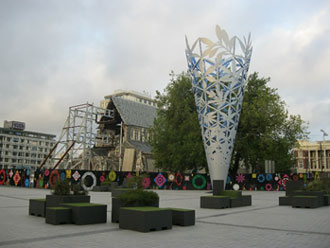A tale of two cities: Auditing the Canterbury recovery

In August 2010, I went to the Garden City to attend a friend’s wedding. I stayed at the Camelot Hotel in Cathedral Square, and explored central Christchurch.
The following month, on 4 September 2010, a magnitude 7.1 earthquake struck Christchurch at 4.35am. On 22 February 2011, a more deadly magnitude 6.3 earthquake struck at 12.51pm.
After the earthquakes, I returned to Christchurch to audit the recovery effort in May 2012. It felt like I was visiting a different city. Everything I knew about Christchurch had changed.
For the last five years, I have been involved in observing and auditing how Christchurch is recovering from the earthquakes. I have met dedicated and passionate people from public entities, the private sector, and non-governmental organisations. I have also talked to frustrated and weary people in the community. I have seen repairs to earthquake-damaged homes and I have seen new pipes being laid by the Stronger Christchurch Infrastructure Rebuild Team.
One of my most sobering experiences came while working with colleagues from the Japanese Board of Audit, who were in Christchurch to learn about the recovery. As part of the trip, we stopped at the site where the CTV building used to be and we observed a minute’s silence for the victims. Of the 115 people who died when the building collapsed, 27 were Japanese.
After the earthquakes, the Auditor-General made it a priority to provide assurance to Parliament, and the public that public entities are carrying out the recovery effectively, efficiently, and appropriately. Alongside our annual audit work, the Office of the Auditor-General put together a Canterbury Work Programme. In the Canterbury recovery, public entities are responsible for repairing people’s damaged homes, repairing pipes and roads, and shaping Canterbury’s future.
So far, we have published six reports on the Canterbury recovery:
- Roles, responsibilities, and funding of public entities after the Canterbury earthquakes (October 2012);
- Earthquake Commission: Managing the Canterbury Home Repair Programme (October 2013);
- Effectiveness and efficiency of arrangements to repair pipes and roads in Christchurch (November 2013);
- Earthquake Commission: Managing the Canterbury Home Repair Programme – follow-up audit (November 2015);
- Governance and accountability for three Christchurch rebuild projects (December 2015); and
- Effectiveness and efficiency of arrangements to repair pipes and roads in Christchurch – follow-up audit (May 2016).
We have provided advice to Parliament on the recovery effort and briefed select committees on the findings of these reports and our annual audits, including on the Canterbury Earthquake Recovery Authority (CERA), the Earthquake Commission, and Southern Response.
Each of our reports has lessons to help public entities deliver an effective recovery for the people of Canterbury. Some valuable lessons include:
- Effective governance arrangements are essential to provide direction and oversight that will help projects deliver the right facilities, for the right cost, and at the right time.
- Clear accountability at the project level is also needed, so people know each project's intended outcomes and whether these are being achieved.
- When working collaboratively, organisations must have a clear and common understanding about what they are delivering and how they will fund it. They also need to know what each other is doing. Without this clarity, their work might not be mutually supportive, could lack direction, and could be wasteful due to duplication.
- Organisations need to manage people’s expectations, but to give them as much certainty as possible. This should be done through regular communication and consistent processes.
- Public entities must prepare for unlikely – yet potentially catastrophic – events. Such events can require public entities to administer large and complex initiatives that must be quickly set up.
Under our Annual plan for 2016/17, we are reviewing the effectiveness and efficiency of CERA, and expect to publish that report early this year.
From my desk here in Wellington, I can see 61 Molesworth Street being demolished as a result of the November 2016 Kaikoura earthquake. For me, this is a very real reminder of the importance of learning lessons from the Canterbury earthquakes and ensuring that we apply them to the next recovery.
